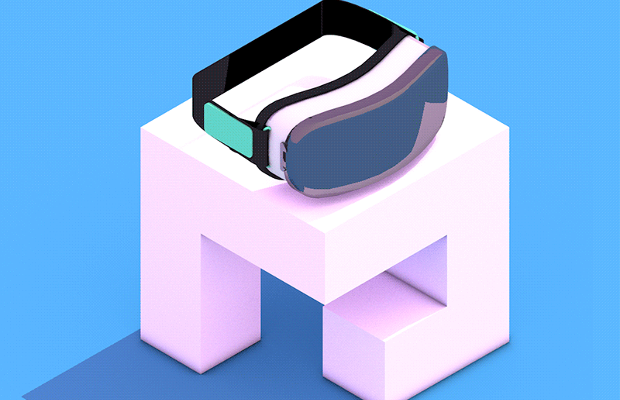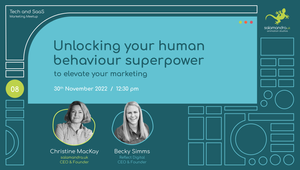
Immersive Realities in Business

As a company providing visual solutions to deliver complex messages, we are selling innovation to a wide variety of industries, and the difficulty comes in ensuring these changes are more effective than what was there before. Two innovative platforms we are excited about are Augmented Reality (AR) and Virtual Reality (VR). Let us give you some stats to back up our passion for using these new platforms in a B2B environment.
Introducing these immersive technologies in B2B industries can be successful in delivering three levels of engagement:
- Intellectual (some useful and relevant knowledge about the solution or products);
- Sensory (seeing and/or hearing relevant aspects of the environment that resonate with their own work environment);
- Emotional (creating a sense of connection with the environment and the solutions).
So, the impact that immersive technologies can have is powerful, converting an original prospect into a tangible and integral resource.
Virtual reality is a billion-pound ballpark. From start-ups to Apple, it is changing the way industries move. In fact, over 43% of manufacturing companies say VR will become mainstream in their organisation by 2022. This goes for Augmented Reality even more so, which is already more widely implemented. These stats also highlight that the benefits of using AR and VR are successful, and 82% of companies who have implemented these say they have exceeded expectations, with increased efficiency and productivity.
Using AR and VR in business provides a plethora of different opportunities. It can be used for event demos, to show off products and experiences, and at its best, VR can be used at events to create virtual spaces to really expand a user’s experiential experience. Look at IKEA; it has released a furniture app for iOS which lets you see how your furnished room would look with their signature IKEA furniture placed in it.
As for going big scale with events, these platforms can create full-on experiences. Making it more immersive for delegates with the endless experience possibilities of VR, this would guarantee fulfilment for the attendees – and on that note, what if people can’t physically attend? Well, they could attend virtually.
Creating a full virtual event can help you reach out to people all around the world who may be restricted on their calendars or travelling, due to time or costs etc. It opens a whole new world of possibilities. It might be considered expensive currently, but then so is running a real event. However, in a virtual world there’s no need for budgeting on speakers, food, and other logistics to host people; it all falls straight into the attendee’s hands. In the same sense, adding AR to an existing event/presentation or whatever it may be, essentially adds a whole new layer to the show, breaking the boundaries of what you can and can’t do as well as when you can take part, because this can all be pre-recorded and experienced at will.
Of course, when it comes to immersive realities, there are hurdles to overcome. “You want to move people away as quickly as possible from using VR as a gimmick,” said Courtenay Smith.
In B2B you look to add value to your business or brand and that may be why AR/VR is both an appealing but challenging option. Luckily, some of these worries such as connectivity and latency are being overcome by this innovative technology moving forward so quickly.
As a business, we relate to the use of VR and AR bringing complex material to life. It is astonishing how much it is used in the pharmaceutical and medical industry to simulate training, to educate and to literally save lives. Even just down to AR and VR boosting engagement, it can save time and money in training professionals.
An article from Pharma Voice says, “Augmented reality with the right content and with the right use case can be very engaging,” – Sanjiv Mody, CEO and founder of Pixacore. “It is not a replacement for a traditional presentation, but AR certainly adds dimension and interactivity to current methods.”
Something that helps AR and VR develop so quickly is – another abbreviation – AI. Artificial intelligence and machine learning tools are quickly helping these virtual worlds become more sophisticated day by day, allowing computers to ‘see’ through cameras which is an essential tool for the user’s field to be identified and built on using algorithms.
Linking back to the use of AI in the medical industry, Google’s machine learning ‘microscope’ in development is a product which can use AI to actually identify tissues which could be cancerous, just by looking at samples through a viewfinder. The adaptations being made within the industry are rapidly becoming more capable and helpful than ever imagined.
We’re convinced that immersive realities are exciting fields to adopt as part of your Marketing, Events and PR. They are already tapping into the business sector and with potential to grow rapidly and change the way we work, buy, sell and promote products, services and businesses. In a few years, you will look back and wonder how we ever lived without it – just like the smartphone or screen you’re currently reading this on – so why not be an early adopter and improve the way you work now?
As experts in conveying complex messages via Animation and Design, we have a refined skill set with VR and AR too and you can get in touch for a no-obligation workshop via our contact page.










